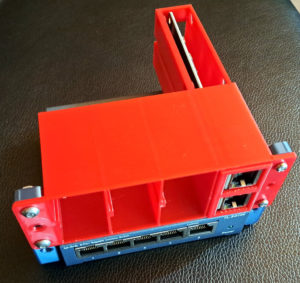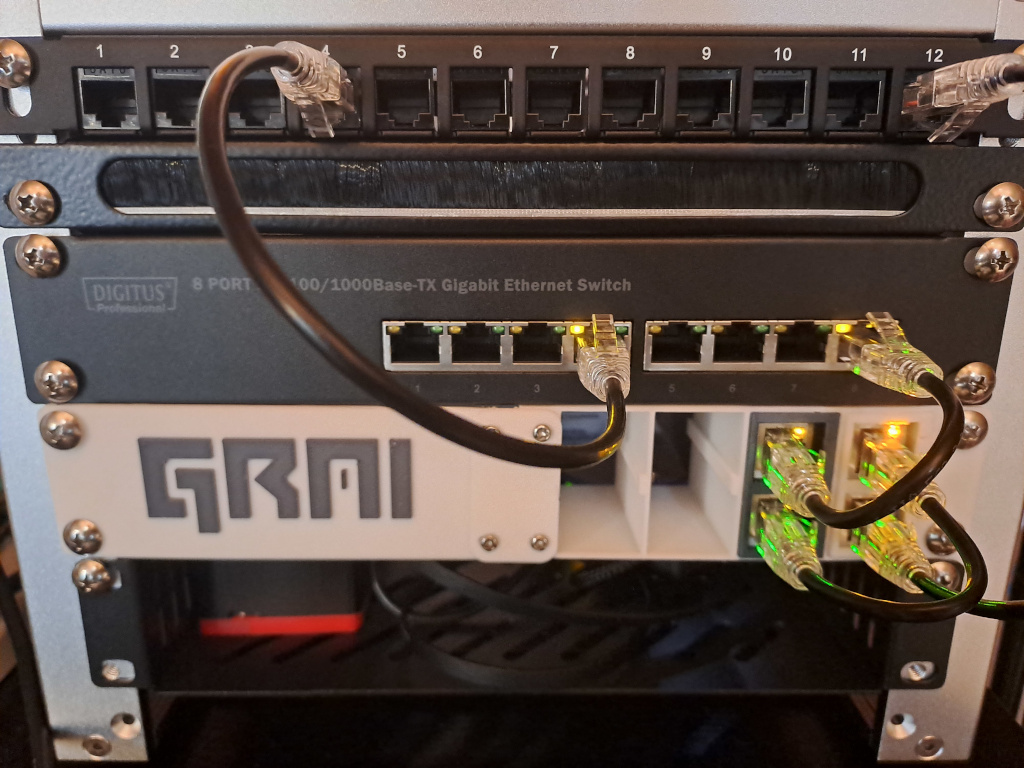
Klinge is an FPGA-based blade server suitable for building trusted networks. Klinge is especially suitable for this because its SOC/CPU is completely auditable and can be built and updated using 100% open-source software.
This post is a quick guide for setting up a private trusted network using two Klinge servers and a 5-port switch. This guide assumes you’re using Kakao Linux. Check out our Half10 repo for a 3D-printable rack system.
The network will look like this:
[ Internet ] | [ Router / LAN (untrusted) ] | [ Klinge #1 - DMZ (semi-trusted) ] | [ Klinge #2 - Perimeter (trusted) ] | [ 5-port switch - Trusted LAN ]
In this setup the perimeter can act as a firewall limiting or completely excluding traffic from the DMZ to the trusted network.
Here are the benefits of this setup according to ChatGPT:
| Feature | One Server | Two Servers |
|---|---|---|
| Security Zones | Single, flat | Clearly separated (DMZ vs LAN) |
| Defense-in-Depth | No | Yes |
| Exposure Management | High | Minimized |
| Compromise Containment | Poor | Better (breach isolation) |
| Policy Granularity | Limited | Fine-grained control |
| Service Isolation | Minimal | Strong |
Configuration
Connecting the Ethernet cables is straightforward. The eth0 port on Klinge #1 connects to your existing LAN and the eth1 port connects to the eth0 port of Klinge #2. The eth1 port of Klinge #2 connects to the 5-port switch, which is the trusted network.
Configuring Klinge #1 (DMZ):
# enable ip forwarding $ cat net.ipv4.ip_forward=1 >> /etc/sysctl.conf $ sysctl -p # edit /etc/network/interfaces: auto eth0 iface eth0 inet dhcp auto eth1 iface eth1 inet static address 10.10.10.1 netmask 255.255.255.0
Configuring Klinge #2 (Perimeter):
# edit /etc/network/interfaces: auto eth0 iface eth0 inet static address 10.10.10.2 netmask 255.255.255.0 auto eth1 iface eth1 inet static address 10.20.0.1 netmask 255.255.0.0 # to configure DHCP on the trusted LAN, edit /etc/dnsmasq.conf: interface=eth1 dhcp-range=10.20.0.100,10.20.0.199,12h dhcp-option=6,10.20.0.1 # to use this server as the nameserver, edit /etc/resolv.conf: nameserver ::1 nameserver 127.0.0.1 # to set hostnames for static IPs, edit /etc/hosts: 127.0.0.1 localhost 10.20.0.1 perimeter 10.20.0.80 my-laptop
Here’s an example of a similar setup in a 10″ rack used by Grai for a long-term storage solution based on Ebenstahl:

Thanks for reading.
